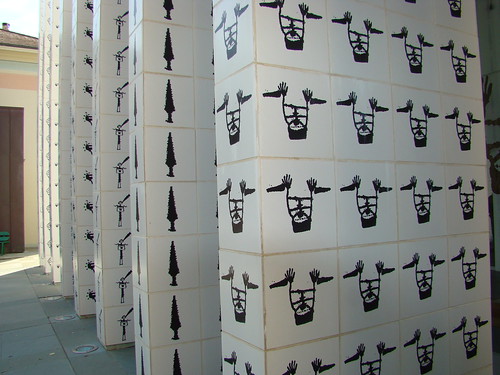When it comes to most of the major events of history, you have to go looking for the women, have to hunt in the darker corners of the archives, seek their behind-the-scenes presence. That's not, however, the case with the French Revolution. From the legendary revolutionaries Theroigne de Mericourt and Olympe de Gouges, who had hoped that the new regime would extend some of the rights now being given to men to their wives and sisters, to the tricoteuse watching heads roll from the guillotine, women's role was very public, if very controversial, and anyone who's studied the Revolution at even the most basic level will have some sense of it.
But there's far, far more to know – and for an overview you couldn't do any better than Marilyn Yalom's Blood Sisters: Women of the French Revolution. She's collected all of the revolutionary memoirs of women known, and sorted and sifted them into one neat, accessible volume. Yalom provides a certain amount of academic framing for this, noting particularly the way in which women jump from the personal to political and back again, giving equal importance to each, while also often putting themselves into the background and their male relatives (whose defence is often the putative aim of making a record). But mostly she simply lets the women tell their stories, while providing enough context to explain and amplify them.
The aristocratic women are here. There's the Duchesse de Tourzel, the famously level-headed and sober figure from the mad court of Versailles who was on the fateful flight to Varennes that sealed the fate of the royal family. She was an acute observer; as Yalom records, she noted that as the family was returned to Paris: "Following the order of Monsieur de La Fayette, everyone had his head covered, he had also enjoined them to remain absolutely silent to show the King, he said, the feelings his trip had inspired. His orders were so strictly observed that several scullery-boys without hats covered thei heads with their dirty, filthy handkerchiefs.
And almost at the other end of the social scale, yet servant too at the very end to Marie-Antoinette was Rosalie Lamorliere, a humble servant who told her story to one of the queen's early biographers. Yalom notes that here is a simple but seemingly honet witness who "spares us nothing — neither the queen's last bowl of soup not the vaginal hemorrhaging to which she was subject".
So too are the Revolutionaries– Madame Roland, who in the five months in prison before her execution wrote, Yalom says, "the work that would become the most famous eyewitness chronicle of the Revolution", to Charlotte Robespierre, who late in life wrote a hagiographic memoir attempting to exonerate and explain her brother.
But as so often it is the humbler stories that are really gripping. I found most powerful, and astonishing here that of Renee Bordereau, whose life was preserved in a "47-page poorly printed pamphlet" (which might so easily have been entirely lost). As Yalom says, in translation, where the French genderised language is lost, you might think this was a male tale:
Arriving near the Loire, I destroyed five of my enemies, and finishing off the day, I broke my sword on the head of the last one… Seeing only one horseman near me, I doubled back to our army. I alone, killed twenty-one that day. I'm not the one who counted them, but those who followed me, and if they hadn't said so, I wouldn't have spoken about it myself.
It sounds like grandiose boasting, yet Yalom reports there are multiple corroborations of the tale, including in two of the other accounts that she records of the extremely vicious "Vendee Insurrection" (which occurred when this isolated, traditional region refused to accept Revolutionary rule).
And this was not some hardened to insensitivity soldier: Bordereau reports the killing of four republicans one day after seeing "one of them had a child of about six months stick on his bayonet with two chickens." An image that she later repeats as obviously haunting her. She survived the war, Yalom tells us, was imprisoned by Napoleon for six years, and did not gain her liberty until the return of Louis XVIII in 1814, when she was also granted money.
It's a story that begs for a grander telling, a complete book, for Yalom has space for little more than a taster. But for an overview for women in the Revolution, this is a great start – a guide to further reading. And if you want to feel like you've got a decent historic grasp of the Revolution, you certainly can't leave out women's place in it.



 About
About